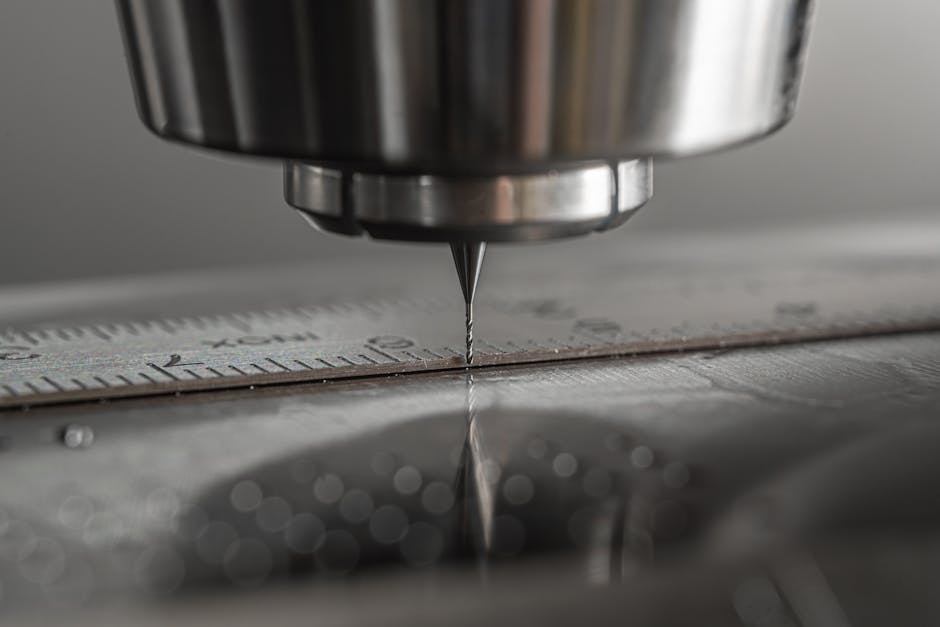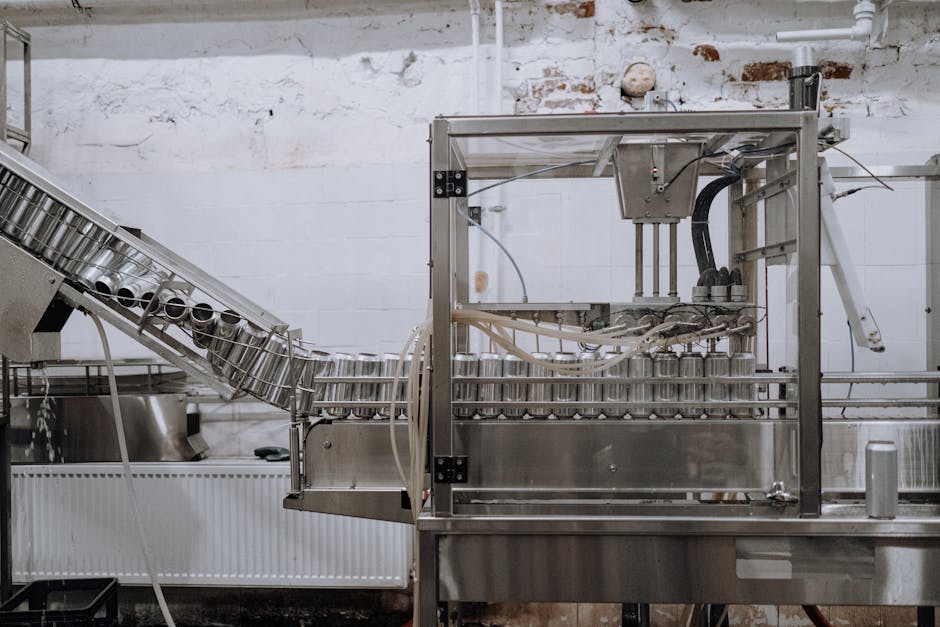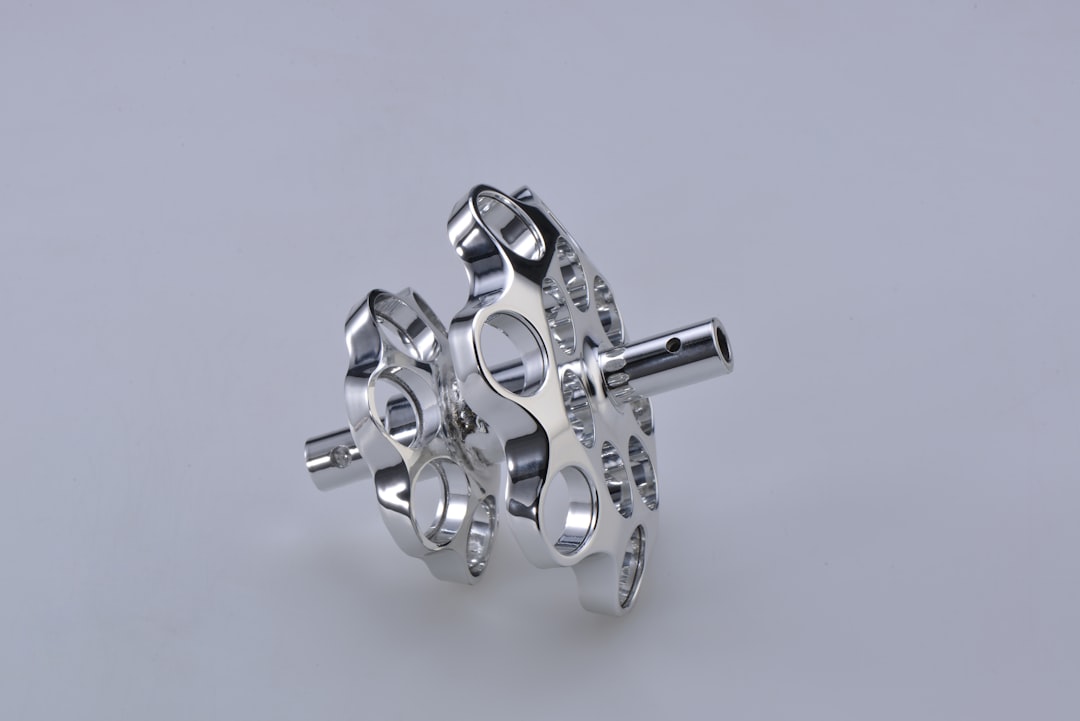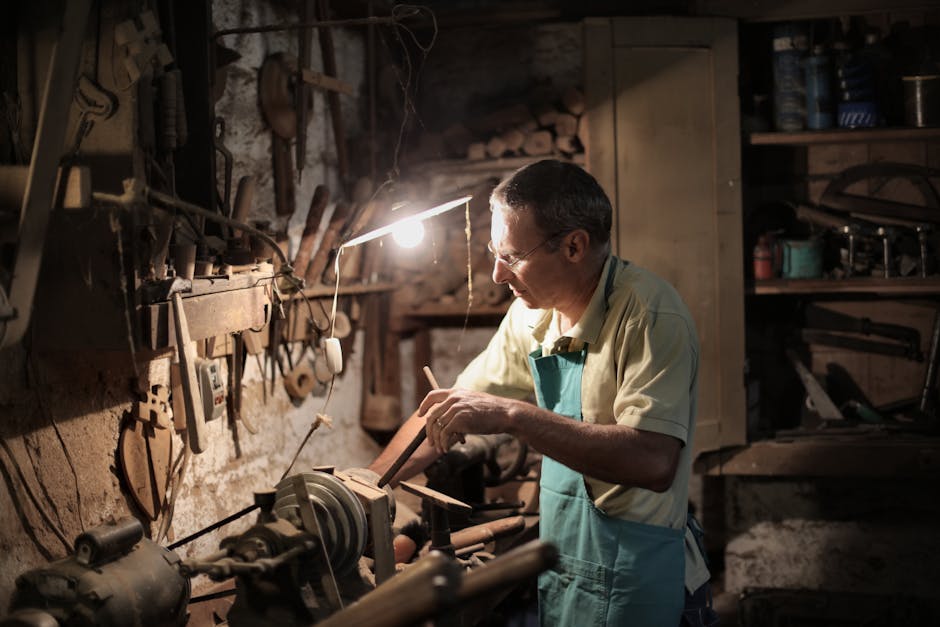Enhancing Precision with Axis Machine Technology
When it comes to axis machine technology in CNC milling, precision and efficiency are the names of the game. CNC, or Computer Numerical Control, machining combines computer programming with traditional subtractive manufacturing, automating processes and ensuring consistent quality.
Here are the key components of axis machine technology:
- X, Y, and Z axes: Basic movement along three planes.
- A and B axes: Additional rotary movements for intricate designs.
- Multiaxis machining: Advanced setups for complex geometries.
Axis machine technology drives innovations in various industries by offering higher part accuracy, superior surface finishes, and reduced setup times.

Understanding Axis Machine Technology
Axis machine technology is at the heart of modern CNC milling, enabling precision and complexity in manufacturing. Let’s break down the key components:
X, Y, and Z Axes
These are the foundational axes in any CNC machine:
- X-axis: Moves the tool side-to-side.
- Y-axis: Moves the tool front-to-back.
- Z-axis: Moves the tool up and down.
These linear movements allow for basic tasks like drilling, threading, and creating planar profiles.
A and B Axes
The addition of rotary axes, known as the A and B axes, brings a new level of complexity and capability:
- A-axis: Rotates around the X-axis. This allows the machine to access different sides of the part without manual repositioning.
- B-axis: Rotates around the Y-axis. This axis is crucial for creating intricate geometries and accessing hard-to-reach areas.
Rotation and Linear Axes
Combining linear and rotary movements enhances the machine’s flexibility and precision. For example:
- Linear Axes (X, Y, Z): Provide straightforward, linear movements.
- Rotary Axes (A, B): Enable the tool to approach the workpiece from various angles.
This combination is essential for industries like aerospace and medical, where complex shapes and tight tolerances are common.
Real-World Applications
Axis machine technology is transformative across many industries:
- Aerospace: 5-axis machines are used to create intricate components like turbine blades. The ability to machine from multiple angles ensures precision and reduces setup times.
- Medical: Complex medical devices, such as implants, benefit from the high accuracy and intricate detailing possible with multiaxis machining.
- Automotive: Engine components and custom parts are efficiently produced with superior surface finishes.
In summary, understanding the roles of X, Y, Z, A, and B axes, along with their linear and rotational movements, is crucial for leveraging the full potential of axis machine technology. This technology not only enhances precision but also significantly boosts productivity and reduces manufacturing times.
Next, let’s explore the evolution of CNC machining and how it has transformed from manual processes to advanced multiaxis setups.
The Evolution of CNC Machining
Manual Machining
In the early days of manufacturing, everything was done manually. Skilled operators controlled the machinery by hand, making precise cuts and adjustments. While this allowed for a high level of customization, it was also time-consuming and prone to human error.
Computer Numerical Control (CNC)
Then came Computer Numerical Control (CNC), a game-changer in machining. CNC technology introduced computer-controlled machinery, which could execute complex tasks with pinpoint accuracy. Instead of manually guiding the tools, operators could now program the machine using digital instructions known as G-codes. This innovation drastically improved precision, repeatability, and efficiency.
Multiaxis Machines
But the evolution didn’t stop there. The need for even more complex and precise parts led to the development of multiaxis machines. Unlike traditional 3-axis machines that move along the X, Y, and Z axes, multiaxis machines can rotate around additional axes (A and B axes). This extra movement allows the cutting tool to approach the workpiece from different angles, enabling the creation of intricate shapes and geometries.
For example, 4-axis machines add a rotating axis around the X-axis, known as the A-axis. This allows for more complex profiles and can machine multiple sides of a component in a single setup. 5-axis machines go even further, adding another rotational axis, typically the B-axis or C-axis, allowing the tool to approach the workpiece from virtually any direction.
CAM Software
However, the capabilities of multiaxis machines are only as good as the software that drives them. Computer-Aided Manufacturing (CAM) software plays a crucial role here. CAM software converts 3D models into tool paths, which are the routes the machine takes to mill a part. It considers the tool head parameters, blank dimensions, and machine constraints to generate these paths.
Recent advancements in CAM software have further boosted the capabilities of multiaxis machines. For instance, topology optimization refines 3D models to be more efficient and cost-effective. Automated recognition of 3D model features simplifies tool path generation by identifying instructions from the model’s features.
CAM software is the brain behind the brawn of multiaxis machines, turning complex designs into precise, high-quality parts.
Next, we’ll delve into the different types of axis machines and their specific applications.
Types of Axis Machines and Their Applications
3-Axis Machines
3-axis machines are the most basic form of CNC milling. They move the cutting tool along three linear axes: X (left to right), Y (front to back), and Z (up and down).
Milling Slots: These machines are perfect for milling slots in a workpiece, providing precise linear cuts.
Drilling Holes: Ideal for drilling holes, 3-axis machines can handle straightforward tasks with high accuracy.
Cutting Edges: They excel in cutting edges and simple contours, making them a staple in many workshops.
Despite their simplicity, 3-axis machines are versatile and widely used in various industries, including furniture manufacturing and basic metalworking.
4-Axis Machines
4-axis machines add a rotary movement to the capabilities of a 3-axis machine. This fourth axis, typically the A-axis, allows the workpiece to rotate around the X-axis.
Rotary Movement: This added rotation enables more complex shapes and profiles to be machined without re-clamping the workpiece.
Engraving Curved Surfaces: Perfect for engraving on curved surfaces, 4-axis machines can create intricate designs on cylindrical objects.
Intermittent Cutting: They are also great for intermittent cutting, where the tool engages and disengages with the material, useful in creating detailed patterns.
Industries like jewelry making and precision engraving benefit significantly from 4-axis machines due to their enhanced capabilities.
5-Axis Machines
5-axis machines are the pinnacle of CNC milling, adding two additional rotational axes—typically the B-axis (rotation around the Y-axis) and the C-axis (rotation around the Z-axis).
Simultaneous Machining: These machines can perform simultaneous machining on multiple surfaces, drastically reducing setup times.
Complex Shapes: They are capable of creating highly complex shapes, making them indispensable in industries like aerospace and medical device manufacturing.
Automobile Industry: In the automobile industry, 5-axis machines are used to manufacture intricate engine components and custom parts.
Aerospace: The aerospace sector relies on 5-axis machines for producing parts with tight tolerances and complex geometries.
Boating: The boating industry uses these machines for creating components that require precise curvature and smooth finishes.
5-axis machines offer unparalleled flexibility and precision, making them the go-to choice for industries requiring high accuracy and complex part geometries.
Next, we’ll explore the numerous benefits of advanced axis machining and how it enhances productivity and part quality.
Benefits of Advanced Axis Machining
Advanced axis machining brings a multitude of benefits that can revolutionize your manufacturing process. Let’s delve into some of the key advantages.
Increased Productivity
One of the standout benefits of advanced axis machines is the significant boost in productivity. With the ability to machine complex shapes in a single setup, you save time on fixture preparation and reduce the need for multiple setups. This streamlining can lead to faster project completion and higher throughput.
“Machine complex shapes in a single setup for increased productivity.” – Source
Higher Part Accuracy
Advanced axis machining ensures higher part accuracy. By machining parts in one go, you minimize the chances of errors that can occur when moving the workpiece between different setups. This results in more accurate parts and tighter tolerances.
“Higher part accuracy because the workpiece does not move across multiple workstations.” – Source
Superior Surface Finishes
With advanced axis machining, you can achieve superior surface finishes. The ability to use shorter cutting tools reduces vibrations, allowing for higher cutting speeds and smoother surface finishes. This is crucial for industries like aerospace and automotive, where surface quality is paramount.
“Achieve superior surface finishes and overall better part quality.” – Source
Complex Part Geometries
Advanced axis machining excels at handling complex part geometries. Whether it’s intricate engine components or custom aerospace parts, these machines can produce highly detailed and complex shapes that are difficult or impossible with traditional methods.
“Our simultaneous 5-axis technology raises the limits on the types of part geometries you can machine.” – Source
Reduced Setup Times
Reducing setup times is another significant benefit. Advanced axis machines eliminate the need for frequent repositioning and re-clamping of the workpiece. This not only saves time but also reduces the risk of human error, leading to more consistent and reliable production.
“Save time and money with less fixture preparation.” – Source
Next, we’ll address some frequently asked questions about axis machines and their capabilities.
Frequently Asked Questions about Axis Machines
What is a Machine Axis?
A machine axis is a direction in which the cutting tool or workpiece can move. In CNC machining, these axes are essential for determining how a machine operates and what it can produce.
- X-axis: Moves the tool or workpiece left to right.
- Y-axis: Moves the tool or workpiece front to back.
- Z-axis: Moves the tool or workpiece up and down.
These three axes form the foundation of most CNC machines, allowing for basic movements and operations like drilling holes or cutting slots.
What is 5-Axis Machines?
A 5-axis machine adds two rotational movements to the standard three linear axes (X, Y, Z). These additional axes are:
- A-axis: Rotates around the X-axis.
- B-axis: Rotates around the Y-axis.
This allows the cutting tool to approach the workpiece from any direction, making it possible to machine complex shapes and features in a single setup.
“5-axis machining allows for simultaneous movement along five different axes, providing unmatched precision and flexibility.” – Source
How Much Does 5-Axis CNC Cost Per Hour?
The cost of operating a 5-axis CNC machine is higher than traditional 3-axis machines due to its advanced capabilities and complexity.
- High-speed milling: This allows for faster production but increases energy consumption and tool wear.
- Post-processing costs: These can include machine maintenance, software updates, and labor.
Typically, the hourly rate for 5-axis machining ranges from $75 to $120 per hour. This includes factors like machine depreciation, maintenance, and energy consumption.
Understanding these costs is crucial for accurately pricing your projects and ensuring profitability.
Next, we’ll delve into the future of axis machine technology and its potential impact on manufacturing.
Conclusion
The future of manufacturing is bright, and axis machine technology is at the forefront of this innovation. At TMC Technologies, we are committed to leveraging the latest advancements in CNC machining to deliver high-precision, custom-engineered parts that meet the evolving needs of our clients.
Innovation in Machining
CNC machining has come a long way from its early days of manual operation. The introduction of advanced multi-axis machines has revolutionized the industry, allowing for the production of complex geometries with unparalleled precision. These innovations are not just enhancing productivity but are also driving smarter, data-driven manufacturing processes.
TMC Technologies
At TMC Technologies, we pride ourselves on staying ahead of the curve. Our state-of-the-art facilities and expert team ensure that we can tackle even the most challenging machining projects. Whether it’s creating intricate aerospace components or crafting vital medical equipment, our focus is on delivering quality and precision.
For more information on how we can meet your manufacturing needs, visit our service page.
Future of Manufacturing
As we look ahead, the role of advanced CNC machining will only become more critical. Emerging technologies like AI and machine learning are set to take industrial machining to new heights. Real-time data collection and analysis will enable better quality control, predictive maintenance, and process optimization.
In conclusion, axis machine technology is not just a component of the manufacturing process; it is the backbone on which modern industries stand. At TMC Technologies, we are excited to be part of this future, delivering high-quality, precision-engineered parts that power the next generation of innovation.

















